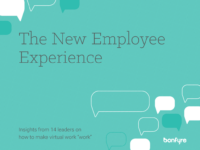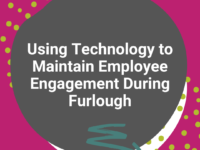It now seems quaint, but there was once a time when sending email was the most incredible feeling in the world.
Readers who grew up in our current digital age may not understand, but there really was nothing like it. Through this strange and clunky box on your desk, you could send a letter to anyone you knew–no matter where they were–and they’d receive it instantly. The immediacy of this new piece of technology felt, for a time, incredible, and people became addicted to that feeling.
As with any new piece of technology, email went through growing pains. People eventually figured out how to send photos and videos with the platform and shared them with wild abandon, not because they needed to but because they could. There was a certain bawdiness that characterized some early email communications too. Some people didn’t understand email was archivable and trackable, and so there was a bit of a free-for-all with respect to what could and should be sent.
Over time as email “matured,” people learned the capabilities, limitations, and etiquette of the medium. More exciting social technology emerged to feed our need for informal digital communications, while email assumed position in the business world as a default tool for “important” communications. And annoying ones too.
Where are we now?
I bring up the evolution of email for two reasons. The first is that, even today in the age of social media, there’s this notion that the connections we’re making through technology aren’t “real,” or are somehow less valid. For decades now, people have been obsessed with the connections technology creates and the emotions those connections produce. It’s nonsense to assert otherwise.
These emotions were real enough in 1978 for Elvis Costello to acknowledge the existence of “telephone junkies” in his song No Action; forty years ago people were addicted to phones and the connections they brought! Twenty years later, they were real enough to make Tom Hanks and Meg Ryan overcome their differences and fall in love in the movie You’ve Got Mail. Even the title of the movie is a nod to that euphoric shot of dopamine people felt any time they received a message in the early days of email. So in 2018, why are we pretending that the communication we’re making through technology is in some way illegitimate when the connections we’re forging and the emotions they bring are far from it?
Related: Is Business Technology Really Improving Your Company?
The second reason is that team communication tools in the workplace are finally catching up to the pioneering advancements of personal social tools made just a decade ago. In many ways, the enterprise technology marketplace is emulating consumer technology offerings. As Bonfyre CEO Mark Sawyier has discussed on Gather Around in the past, we’re seeing the tools for productivity and “getting work done” pop up, but we’re also seeing new tools designed for the softer side of business, platforms for workplace culture and engagement. These new team communication tools are experiencing similar growing pains of “finding their place” that email did, but at a significantly accelerated rate. In fact, they’re already changing the way workplaces communicate.
What happens when communication goes digital?
When it comes to communication in the workplace, connecting face-to-face is king. Just having the physical presence of another person in the room adds richness to the meaning you’re able to communicate, and extra layers of depth to the empathy and understanding you have for that person.
Stuart Chittenden–founder of the business consultancy Squishtalks–refers to this as one of the key things that distinguishes conversation from mere communication. Whereas plain communication is often transactional–a necessary exchange of information from person A to person B–conversation requires patience, commitment, and an intent to understand another person. Communication creates feelings of inclusivity, but conversation creates lasting bonds.
So what happens when communication goes digital? Well, the oft-cited (erroneous) statistic is that 90% of human communication is nonverbal. In other words, by moving to digital or another text-based communication format, you lose all of the meaning stored in your tone of voice and body language, leaving just your words to speak for themselves.
While it’s true that we lose meaning moving to different mediums, digital communications have not been relegated merely to text for some time. As social technology has matured, so has our ability to approximate our missing intent. We now have photos, videos, emoticons, emojis, gifs, and more to “plug in” the meaning we can’t always convey with our bodies and voices.
As the New York Times’ Jenna Wortham writes, even a simple emoji makes it “infinitely easier” to convey concepts like sarcasm, grief, and love across what used to be an “emotionally arid” medium. While our capacity for deep conversation may be diminished–at least Chittenden’s definition of it–there doesn’t have to be a drought of meaning or emotion.
How are we using team communication tools at work?
At work, this digital expressiveness directly informs how we communicate through all these fancy new team communication tools. When a person–you, me, anyone–decides to use digital communications at work, they go through a process where they consider two things: intent and content. Intent refers to the meaning they want to convey with their message. Content refers to the information they want to share and the features the tool provides to support it.
Ultimately, our final channel selection comes from a process of selective decision-making; we evaluate the meaning we’re comfortable losing against the meaning we feel we can’t do without. Whereas it took a while for email to find its place, with these new tools all of this decision-making happens in an instant. Seldom is it that anyone gets really hung up over whether it’s better to communicate over their productivity or enterprise social tool anymore. We just know.
All our lives we’ve been making these decisions with other communications channels. It’s why we call someone when we have bad news. It’s why we hold a meeting when we need to hack a big company problem. Now, it’s why we give out a recognition badge to a star employee on our culture platform so everyone can see. Now, it’s why we have digital communities specific for sharing photos of our cherished pets so we shift that expressive communication to a space better built for it rather than interrupting the flow of work happening on productivity tools.
Related: Internal Communications: Fundamentals for a Strategic Framework
To borrow Wortham’s turn of phrase, team communication tools used to be “emotionally arid.” Before recently, many workplaces were relegated to email, intranets, and instant messaging as their primary digital solutions. Two of those are point-to-point platforms, tools great for communicating between two people that become increasingly unwieldy as more people are added to, and become active in, the conversation. The other, intranets, is a systems to people platform, which may possess social functionality but are still designed around housing documents for processes and work.
As the offering of team communication tools has diversified, our ability to digitally communicate with emotional intelligence has deepened. We’ve quickly arrived at a savviness of knowing what’s appropriate and what’s inappropriate in these digital spaces. Now we’re trying to find out how much more depth can we create within these contextually appropriate tools.
Digital expressiveness isn’t a replacement for face-to-face conversation, but a means of enhancing it, and it’s entering the workplace at an opportune time. Deloitte Insights notes that the “‘essentially human’ parts of work are becoming more important” as a consequence of our increasingly automated and AI-enhanced work climate. Deloitte argues that skills for emotional intelligence, communication, and empathy will be necessary counterbalances in the future’s more robotic work climate. If that’s true, we need to harness them across all avenues available.
Just like we can’t unmake Facebook, we can’t erase the profound impact digital communication has already made on work. The less robotic and more expressive, emotional, and empathetic we can be with it, the better. That’s what will create the ties that bind, producing a sense of purpose and workplace engagement. We’re just now scratching the surface of what we can do with team communication tools. With the technology we have today, we might not be able manage the depth and patience required for Chittenden’s concept of human conversation. But who knows? Maybe the next big disruption will get us closer.



 5 min
5 min




